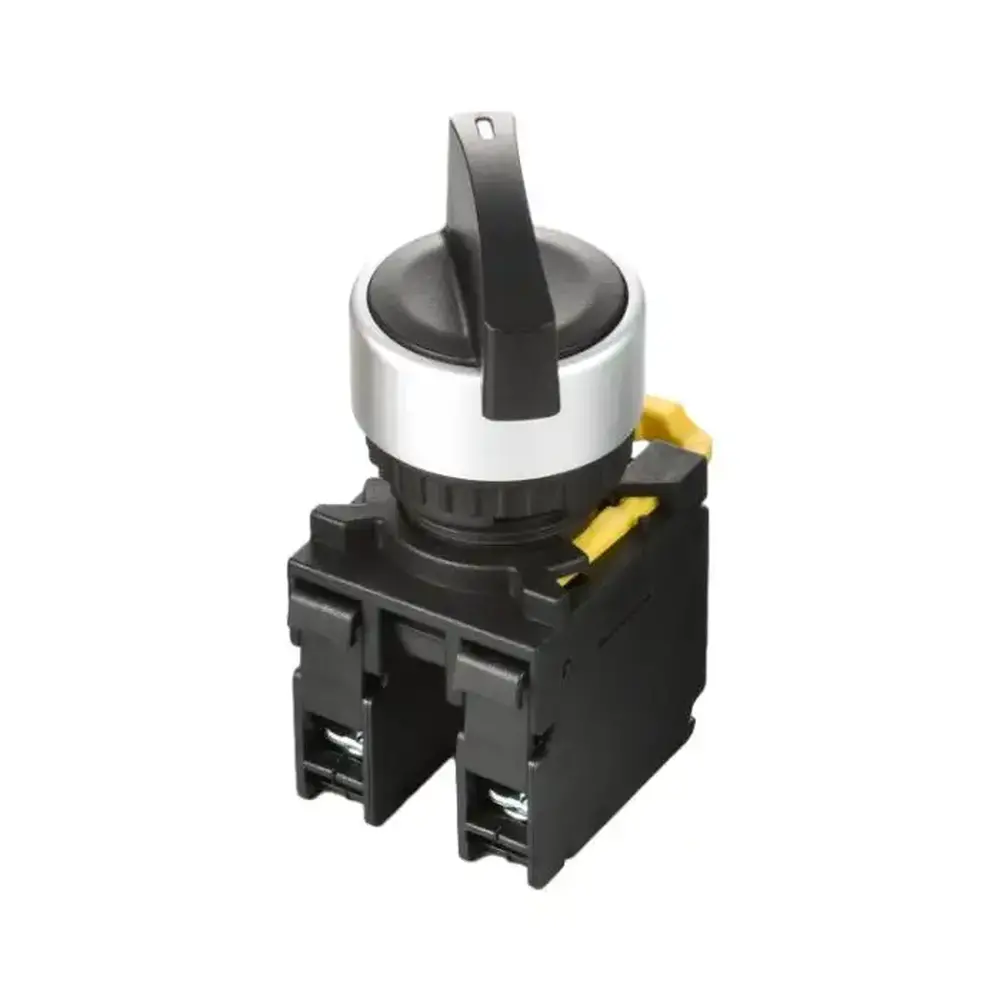Introduction
In the world of electrical control systems, switches play a critical role by allowing users to interact with and manage various devices. Among the most widely used types are Push Button Switches and Rotary Switches, each offering unique functionalities suited for different applications. This blog post will explore these two switch types, delving into their design, functionality, advantages, and common uses.
Push Button Switches: The Basics
What Are They?
A Push Button Switch is an electrical component that controls the operation of a device by completing or breaking an electrical circuit when pressed. These switches are characterized by a button that protrudes from the housing and can be pushed in and released by hand. Depending on the design, pressing the button can either make (close) or break (open) a circuit.
Types and Functionality
Momentary vs. Latching Action
- Momentary Action: Returns to its normal state once pressure is removed. Ideal for temporary operations such as doorbells or computer reset buttons.
- Latching Action: Stays in the position it was last actuated until pressed again. Suitable for toggle functions like power on/off switches.
Normally Open (NO) vs. Normally Closed (NC)
- Normally Open (NO): Does not complete the circuit in its resting state. Pressing closes the circuit, allowing current to flow.
- Normally Closed (NC): Closes the circuit in its resting state. Pressing opens the circuit, stopping the flow of current.
Applications
Push button switches find application across numerous industries:
- Consumer Electronics: Remote controls, calculators, home appliances.
- Automotive Industry: Dashboards, seat controls, vehicle interfaces.
- Industrial Automation: Machinery control panels, conveyor systems, robotic arms.
- Medical Equipment: Diagnostic machines, patient monitors, surgical tools.
Rotary Switches: An Overview
What Are They?
A Rotary Switch operates by rotating a knob or shaft to change positions, thereby altering the connection between terminals. Unlike push button switches, rotary switches provide multiple positions and can handle more complex switching tasks.
Types and Functionality
Single-Pole Multi-Throw (SPMT) vs. Multi-Pole Multi-Throw (MPMT)
- Single-Pole Multi-Throw (SPMT): One input connected to several outputs. Commonly used in volume controls or mode selectors.
- Multi-Pole Multi-Throw (MPMT): Multiple inputs and outputs, allowing simultaneous control over several circuits. Often found in sophisticated electronic equipment.
Advantages
- Multiple Positions: Offer greater flexibility compared to simple on/off switches.
- Precise Control: Enable fine-tuned adjustments, making them ideal for audio equipment and other settings requiring nuanced control.
- Durability: Designed to withstand repeated rotations without significant wear.
Applications
Rotary switches are utilized in a variety of sectors:
- Audio Equipment: Volume controls, channel selection.
- Power Distribution: Switching between different power sources or phases.
- Communication Devices: Frequency band selection.
- Industrial Controls: Managing multiple machine settings or operational modes.
Comparison and Integration
While both push button and rotary switches serve essential roles in electrical control systems, they cater to different needs. Push button switches excel in scenarios requiring immediate, momentary actions or toggling between two states. In contrast, rotary switches are advantageous when multiple options or precise adjustments are necessary.
In many cases, these two switch types complement each other within a single system. For example, a piece of industrial machinery might use push button switches for emergency stop functions and rotary switches for selecting operational modes or adjusting parameters.
Conclusion
Both Push Button Switches and Rotary Switches are indispensable components in modern electronics and electrical engineering. Their versatility, reliability, and specific capabilities ensure that they remain relevant across diverse applications. As technology advances, these fundamental elements continue to adapt, providing the necessary interface between humans and the increasingly complex devices we rely on daily.
In summary, understanding the principles and applications of push button and rotary switches can offer valuable insights into how these seemingly simple devices enable us to control and interact with our technological world. Whether in your home, car, or workplace, these switches facilitate the everyday interactions that keep our world running smoothly.

